Inconnu Late release rosé
Inconnu cabernet Sauvignon los carneros
Ovum Big Salt White
Salvard Cheverny
Ile de Rosé
Cattin Pinot Noir
Castella Dolcetto
Pelaquie Lirac
Wohlmuth Kitzeck-Sausal Sauvignon Blanc
Domaine Anita Fleurie Moriers or Poncié
Bondar GSM Junto
St. Galet Chateauneuf du Pape
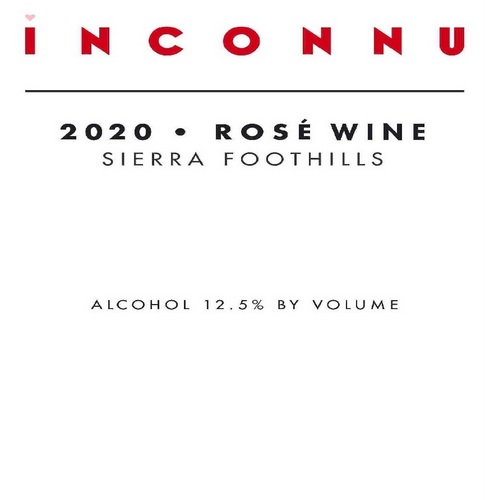 Inconnu late release rosé – Organic
Inconnu late release rosé – Organic
Founded in 2012 by Laura Brennan Bissell, Inconnu is a project focused on reflecting the frequently unsung subtlety and elegance that is possible in California wine; an integration of terroir selection, and respect for classical winemaking philosophies. These wines are driven by acid and minerality, while embracing a climate that will perpetually leave its fruit perfectly ripened and sun-kissed. They showcase a through-line of gentle constancy and balance while not shying away from physiological ripeness and a devotion to what California has to offer.
Brennan Bissell is focused on working with organic and regeneratively farmed parcels in California, which reflect the way she farms her estate vineyards in Underwood, Washington, in the Columbia Gorge AVA. She seeks out cooler climates and areas with greater diurnal shifts, complex soil compositions, family-owned parcels – places that ‘just feel right.’
In the cellar a softer hand is exercised so that the fruit may express itself without the cumbersome approaches frequently taken in conventional winemaking. Patience, she believes, solves problems more effectively than intervention, especially when one knows that they’ve covered most of their bases from the start. Although she was forced to buy a few new barrels for her Washington Lorelei project, she avoids new oak, seeking out 2-3 year barrels, preferably Bordeaux shape, due to the larger evaporative surface. Have no fear, she tops the barrels off meticulously.
White grapes are left to sit cold and untouched for 24-72 hours before pressing, which she finds helps develop the phenolics without increasing tannin and helps give the native yeasts an opportunity to start their work. “The less logical part of me likes to let the grapes make their transition from life support before throwing them into the metaphorical hopper (I’ve never used a hopper).”
“I age my wines until they are ready, and at this point do not let the pressure of such things as ‘rosé season,’ affect my decision-making when it comes to bottling and release. In the grand scheme of things, over a decade in, I am at the beginning of my winemaking career, and these decisions, though monetarily tempting in the short-term, will only be setbacks in the big picture of the type of producer I would like to be.”
Upon moving with her family to Washington, she reached out to Mimi Casteel, an Oregon winegrower considered by many to be the guru of regenerative agriculture for vineyards. “…I have learned so much from Mimi it makes me tear up to think about it. She has become an unflappable friend, and I will forever look up to her… as she ascends into the stratosphere, and pushes all of us to be better people.”
Produced from grapes that would normally have gone into the Kitsune Merlot, Laura elected to harvest the grapes early to avoid the devastating smoke that would envelop the area just days later. The resulting wine turned out to be anything but a “turn and burn” rosé destined to be drunk soon after bottling. She devoted 12 months of barrel aging to this wine which deserved so much more attention than your typical iced, early-drinking rosé.
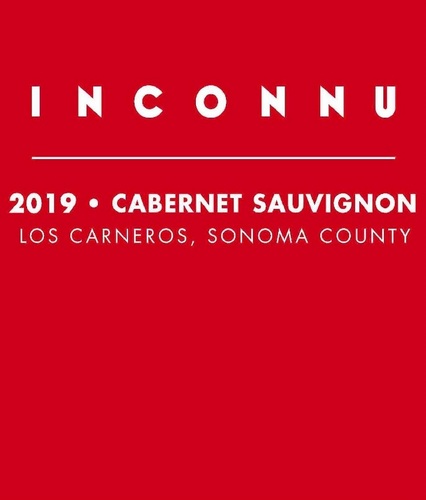 Inconnu Cabernet Los Carneros 2019 – Organic
Inconnu Cabernet Los Carneros 2019 – Organic
Founded in 2012 by Laura Brennan Bissell, Inconnu is a project focused on reflecting the frequently unsung subtlety and elegance that is possible in California wine; an integration of terroir selection, and respect for classical winemaking philosophies. These wines are driven by acid and minerality, while embracing a climate that will perpetually leave its fruit perfectly ripened and sun-kissed. They showcase a through-line of gentle constancy and balance while not shying away from physiological ripeness and a devotion to what California has to offer.
Brennan Bissell is focused on working with organic and regeneratively farmed parcels in California, which reflect the way she farms her estate vineyards in Underwood, Washington, in the Columbia Gorge AVA. She seeks out cooler climates and areas with greater diurnal shifts, complex soil compositions, family-owned parcels – places that ‘just feel right.’
In the cellar a softer hand is exercised so that the fruit may express itself without the cumbersome approaches frequently taken in conventional winemaking. Patience, she believes, solves problems more effectively than intervention, especially when one knows that they’ve covered most of their bases from the start. Although she was forced to buy a few new barrels for her Washington Lorelei project, she avoids new oak, seeking out 2-3 year barrels, preferably Bordeaux shape, due to the larger evaporative surface. Have no fear, she tops the barrels off meticulously.
White grapes are left to sit cold and untouched for 24-72 hours before pressing, which she finds helps develop the phenolics without increasing tannin and helps give the native yeasts an opportunity to start their work. “The less logical part of me likes to let the grapes make their transition from life support before throwing them into the metaphorical hopper (I’ve never used a hopper).”
“I age my wines until they are ready, and at this point do not let the pressure of such things as ‘rosé season,’ affect my decision-making when it comes to bottling and release. In the grand scheme of things, over a decade in, I am at the beginning of my winemaking career, and these decisions, though monetarily tempting in the short-term, will only be setbacks in the big picture of the type of producer I would like to be.”
Upon moving with her family to Washington, she reached out to Mimi Casteel, an Oregon winegrower considered by many to be the guru of regenerative agriculture for vineyards. “…I have learned so much from Mimi it makes me tear up to think about it. She has become an unflappable friend, and I will forever look up to her… as she ascends into the stratosphere, and pushes all of us to be better people.”
The Los Carneros Cabernet bottling is 100% Cabernet Sauvignon, from grapes grown on clay, gravelly loam, and sandy loam soils, hand-harvested, indigenous yeast fermented. Barrel-aged , then aged in bottle prior to release.
The vines here are up to 90 years old, making this one of the oldest plantings in Napa and Sonoma of Cabernet Sauvignon. Laura is inspired by 60s and 70s California Bordeaux blends, wines made by farmers who had more of a connection to the vineyard – by the mid 80s, things got bigger and oakier and lost their delicate elegance, and there was a segregation of the cellar and the vineyard. Higher yields in the early years led to lower alcohols.
Just like the rest of Coplan Vineyard, this is farmed organically, and the soils are characteristic Carneros “gumbo” soils (clay loam, and a ton of other random stuff). Laura does a slow and cool fermentation to maintain the delicate aromatics/not extract harsher tannins, and then leaves the grapes on the skins for an additional 2 weeks post-fermentation to get silkier tannins. The wine is then aged for 18 months in a mix of neutral and twice-used Sylvain Signature barrels from Larkmead.
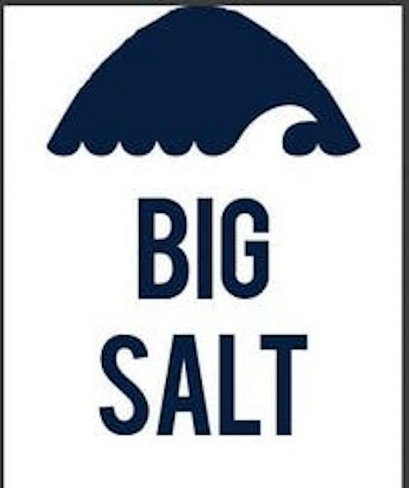 Ovum Big Salt White – Organic
Ovum Big Salt White – Organic
Founded by husband-and-wife duo John House and Ksenija Kostic in 2011, Ovum is a celebration of the diverse expressions of Oregon Riesling. After years of learning the intricacies of the Willamette Valley while working together at Chehalem, John and Ksenija set off to further investigate the myriad terroirs of Oregon through the lens of Riesling, and now source fruit from through the state. They have found sites with blustery Pacific winds, extreme diurnal shifts, and rocky, well-draining soils.
To emphasize the idiosyncrasies of these vineyards, all of Ovum’s wines see the same practices in the cellar: natural fermentations, no additions or subtractions except for SO2, extended lees contact of 8-9 months – all in neutral barrels of acacia and oak, as well as Nomblot concrete eggs. The resulting wines are textured and concentrated, driven by minerality, and framed by unwavering acidity. Ovum’s work is among the most compelling white winemaking in the Pacific Northwest.
Big Salt is made from vineyards in the Elkton AVA, planted on Windygap soils (deep, well-drained residuum and colluvium from sandstone and siltstone) . The grapes blended here are 90% Gewurztraminer (planted in 1980) & Riesling (planted in 1983, native yeast co-fermented in stainless steel. Plus 8% Early Muscat (planted in 1978), native fermented in neutral barrel, 2% Melon, Savignin Rose (planted in 1980), and Pinot Noir (all de-stemmed and added to the press). Made with no additives except low quantities of SO2, crossflow filtered and bottled after 6 months on lees.
Look for sea spray, spices, rich citrus and stone fruits in the nose and on the palate. In spite of the relatively low alcohol, the flavors are fully ripe, densely packed, intense and compelling. This is a terrific Oregon white at this price and full of personality. Serve with seafood, especially Thai and Japanese dishes, or with fresh, crunchy green veggies and salads, goat and sheep’s milk cheeses, gingery accents, salumi dipped in orange ginger mustard and more….
Winery notes: “Big Salt is a co-fermentation rather than a blend – meaning we allow mother nature to create complexity rather than attempting to blend the wine after the fact. Starting in mid Sept, we pick Gewurz that is then soaked on the skins then pressed to tank. As that juice begins to ferment, we incorporate Early Muscat, followed by Riesling, then an additional pick of Gewurz, followed by Pinot Blanc and Riesling. Big Salt is the culmination of the myriad of climates Oregon vineyards have to offer in each vintage.
2021 Big Salt erupts from the glass with a mélange of citrus – bergamot, flamed lemon, sweet grapefruit. Salty white tea aromats are interlaced with pithy lemon before a waft of alyssum hits your senses. Classic Big Salt on the palate – racy acidity combined with beeswax-y textures before finishing dry.”
Big Salt pairs well with fish tacos, pesto chicken pasta, pad thai…or just chilling. Cellar: 3-8 years of optimal drinking.
Prior vintage review 92 points, Wine Enthusiast As production ramps up, quality remains consistently high in this proprietary blend of co-fermented Muscat, Riesling and Gewürztraminer. Spicy, penetrating aromas of pear blossoms, ginger and kumquat lead to a lively palate with citrus skin flavor, a dash of sea salt and drying minerality. It’s a well-balanced, unique white wine with splendid food pairing options.
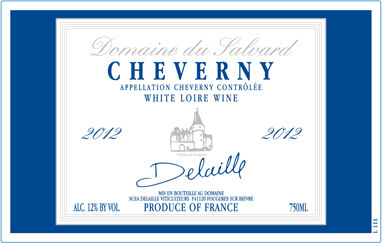 Domaine du Salvard Cheverny blanc – Sustainable with organic practices
Domaine du Salvard Cheverny blanc – Sustainable with organic practices
Domaine du Salvard has been a working domain since 1898, through five hardworking generations of the Delaille family. Today, all 120 acres of vineyards are farmed by the capable brother team of Emmanuel and Thierry Delaille, with help from their father Gilbert.
They have carried on the traditions established by their ancestors, producing a true, classic Cheverny that is both simple and elegant. The Delaille brothers have focused their attention on growing fresh, lively Sauvignon Blanc, deeply rooted in the sand, clay, and limestone plains of northeastern Touraine. Pinot Noir, Gamay, and Cot constitute their red grape holdings, creating youthful reds with great aromatics.
Gilbert and his sons have also made their own contributions to the heritage of the domain, including the introduction of sustainable farming practices into the vineyards, as well as temperature-controlled vinification equipment to the winery. Until finally achieving A.O.C. status in 1993, Cheverny was widely regarded as one of the best V.D.Q.S. (Vin de Qualité Superieur) of the Loire. However, some argue that this A.O.C.-in-waiting designation was a political maneuver by the I.N.A.O. to keep Cheverny’s delicious, sprightly Sauvignon Blanc out of competition with the other more famous appellations of Sancerre and Pouilly-Fumé.
The region produces red, rosé, and white wines. The whites are typically blends of “Sauvignons” (Blanc and/or Gris), with other white grapes including Chenin Blanc, Arbois, and Chardonnay. The region’s terroir, in addition to this common blending practice, distinguishes its white wines from those of the leading appellations of the eastern Loire. The wines of Sancerre and Pouilly-Fume have more prominent acidity and more mineral characteristics than those of Cheverny.
The Domaine du Salvard Cheverny Blanc is a blend of 85% Sauvignon Blanc with 15% Chardonnay. This common but not frequently discussed blend plays on the strengths of each grape variety. The Chardonnay lends roundness and softness to Sauvignon Blanc’s racy and sometimes sharp acidity.
This wine is pleasantly aromatic with notes of refreshing green apple and delicate white flowers. On the palate, the Domaine du Salvard Cheverny Blanc is juicy with gooseberries, melon, and orchard fruits, and a hint of green herbs and lime zest. It is medium-bodied with a lingering almost savory herbal finish.

Île de Rosé-Organic
Corsica is where all the cool kids are going for tip-top level rose these days, and one sip will tell you why. There’s a purity, focus and coolness in these wines that take rosé to the next level. Corsican rosé wines are bright and crisp with a great fruit core.
Corsica, of course, is located in the Mediterranean Sea between the southeastern coast of Provence and the western coast of Tuscany. Although the island is closer to Italy, it has been under French rule since 1764 and therefore, is considered a French appellation.
This organic beauty is 60% Sciacarello (aka Mammolo), an indigenous grape that produces killer rosé wines, and 40% Nieluuci.(Sangiovese). Made by an organic co-op of farmers committed to producing high quality wines.
Île de Rosé sings with purity, sea-saltiness, minerals and ripe red fruits with hints of candied orange zest. Terrifically exuberant acidity is key with a great wine like this and it’s all here!

JOSEPH CATTIN PINOT NOIR – SUSTAINABLE, ORGANIC PRACTICES, VEGAN
Cattin is the largest family-owned and family-operated winery in Alsace and located in Voegtlinshoffen, a small village on the foothills of the Vosges Mountains at 1,091 feet in elevation. The Cattin family has been producing wine since 1720 and today the winery is managed by the 12th generation! The estate is composed of many small plots located in the Southern part of the Colmar region and a staggering 80% of their vineyard land is located on slopes.
A broad menu of soils (clay, limestone, sandstone, ferruginous, marl…), combined with big time diurnal shifts, means an exceptional palate of aromas and flavors. Cattin uses old oak “foudres” (big barrels) to produce some of the region’s most terroir-driven Grand Cru wines such as the legendary Hatschbourg which ranks among the family’s oldest plots.
A superb value Pinot Noir without losing the quality. This light red wine has a nose of red fruits, strawberry, and cherry with a floral balance. A light, clean, smooth taste and is very pleasant on the palate. Crisp, crunchy, tart red berry plays subtly on the nose. The light palate is very pure in a traditional Alsace Pinot Noir fashion. The finish is dry, fresh, and soft. Pairs best with light dishes. In Alsace, it is often served with the tarte flambée (the Alsatian pizza composed of crème, cheese, and bacon). Served chilled as they do in the Alsace, or at room temp.
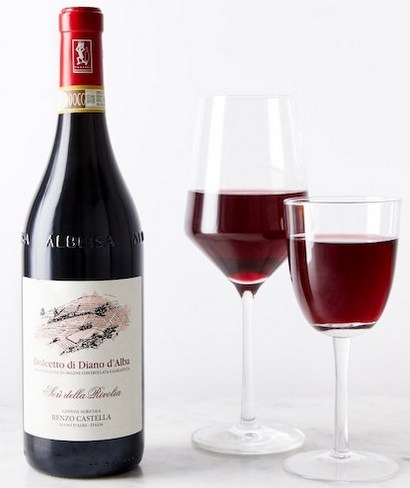 Renzo Castella Dolcetto di Diano d’Alba Sori della Rivolia – Organic
Renzo Castella Dolcetto di Diano d’Alba Sori della Rivolia – Organic
This wine is a “darling” of the sommelier community and for good reason: Nebbiolo/Dolcetto master Renzo Castella’s decades-old, pesticide/herbicide-free vineyards hug the borderline between Diano D’alba (one of Italy’s only Grand Cru-equivalent sites for Dolcetto) and Barolo (one of Italy’s most prestigious wine-growing villages, period). The result is a seductive, dark fruit/floral-scented red with a low price that defies the impressive depth and complexity.
Renzo Castella farms a small vineyard that hugs the border between Serralunga d’Alba and Diano d’Alba. This location is ideally situated to grow both Nebbiolo and Dolcetto, which is exactly what Castella does. Serralunga d’Alba is one of the most famous of Barolo’s comunes, making it part of the center of the Nebbiolo universe.
Diano d’Alba, meanwhile, is one of only seven villages to be granted DOCG status for Dolcetto, Italy’s highest and most esteemed viticultural designation.
While both of these grapes flourish in this part of Piedmont, they behave very differently. Nebbiolo is finicky and hard to ripen but can produce wines of great structure and near-infinite longevity. Dolcetto, on the other hand, is quicker to ripen and lower in acid and tannin, resulting in wines that are delicious from day one and intended to be enjoyed young.
Castella’s Dolcetto is a superb example of what the grape can be achieved when farmed with care – Castella uses neither pesticides nor herbicides in his vineyards – and vinified using traditional methods. This wine possesses great purity of fruit and delicate floral undertones while retaining just a touch of Italian rusticity. It is the perfect thing to accompany a weeknight meal of pasta and pizza, casual and delicious in equal measure.
The finished wine is a magical bottle at a more than reasonable price. With loads of dark fruits, violet, and an overall seductive personality, it should cost twice the price
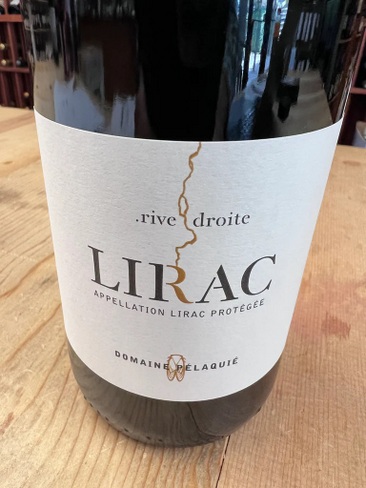 Pélaquié Lirac – Sustainable
Pélaquié Lirac – Sustainable
Domaine Pélaquié is a family-run estate with a long history; the estate has been passed down father to son for generations, cultivating the same land all the way back to the 16th century! The current son in charge, Luc Pélaquié, has modernized the winery, all the while protecting the traditions of his ancestors. He practices sustainable viticulture, certified by HVE, on his 250 acres of vines located in the Côtes-du-Rhône, Laudun, Tavel, and Lirac.
Lirac (pronounce it LEE rock) is in the Southern Rhône and sits west of the Rhône River. Wine grapes have been grown here since the middle ages. While they make reds, whites and rosé in the region, you will primarily find red wines made here (87%).
Lirac is the southernmost cru within the Rhône and has been an appellation since 1947. They have some of the most stringent specifications in the region. The area sits in the Gard department and is out of the way from the traffic in the Rhône Valley. Off the beaten path, and across the river from Châteauneuf-du-Pape, it has remained out of the spotlight in the Rhone and a bit of a secret.
Lirac’s 1,700 acres of vineyard are essentially the other half of Chateauneuf du Pape. Lirac sits on the West bank of the Rhone River, opposite Chateauneuf.
The climate and subsoil are essentially identical to Chateauneuf, and – like Chateauneuf – most of the vineyards are covered in large, rounded stones called “galets” left behind by the Rhone when it filled the entire valley in ancient times. When the Papacy arrived in Avignon in the early 1300s and began searching out sources of wine for communion and celebration, Lirac was quickly identified as the source of the very finest wine in the region. We know that Pope Innocent IV paid a premium for the 20 casks of Lirac he purchased in 1357.
90% Grenache, 30% Mourvedre. Sustainably farmed. 90 points, Parker: “The medium to full-bodied 2017 Lirac starts with scents of black olive, but then those blend easily into red fruit flavors on the palate. Most impressive is the rich,velvety texture, which lingers elegantly through the long finish.”
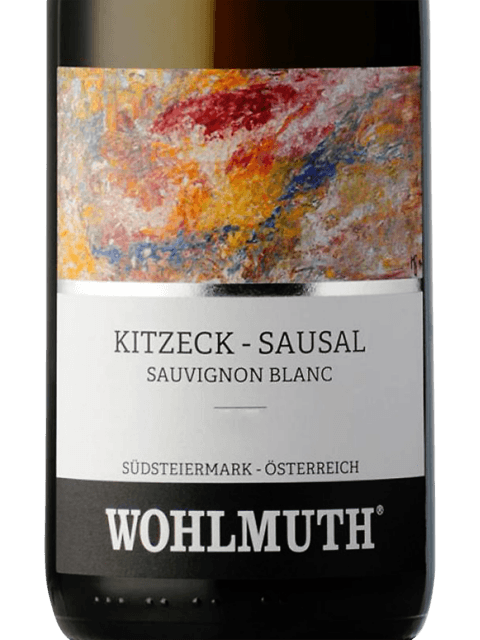 Wohlmuth Kitzeck-Sausal Sauvignon Blanc 2021 Südsteiermark – Organic, Vegan, minimal intervention
Wohlmuth Kitzeck-Sausal Sauvignon Blanc 2021 Südsteiermark – Organic, Vegan, minimal intervention
It’s Sauvignon Blanc – not Grüner Veltliner – that’s the star of the show in Austria’s Südsteiermark DAC, a historic wine-growing region in the country’s southern state of Styria that has evolved rapidly over the last thirty years. The variety is grown at high elevation in all five of Südsteiermark’s subregions and on steep slopes that rival those of the Mosel.
Since 1803, the Wohlmuth family has been pressing grapes in the southern Styrian town of Kitzeck im Sausal, the highest wine-growing village in Austria. Over the years, their work has not changed much – just as in days gone by the solid slate rocks on the surface of the vineyards have to be beaten with hammers, and every single vine has to be laboriously worked into the barren soil. The most detailed manual work – from pruning to the entire foliage work to the selective hand harvest – is the basis of the quality of the wines. Their respect for natural resources is characterized by not using chemicals on the land. There is no irrigation here and the cover crop on the steepest vineyards is still cut with a scythe.
The vineyards lie at an altitude of 1300 to 2000 feet above sea level and, with a slope of up to 90 percent, they are among the steepest vineyards in Europe. Up to 500 hours of work go into each acre of these extreme vineyards every year. The striking slate minerality can be found in all of the winery’s wines and shows how firmly rooted the vine is within the predominant soil of the Kitzeck-Sausal appellation.
For generations, some of the earliest mentioned single vineyards in Austria have been owned by the Wohlmuth family, such as the Edelschuh vineyard, first mentioned in a document in 1322. These historically significant single vineyards are maintained and preserved at great expense and occasionally laboriously replanted. But these vineyards are ultimately the foundation of a unique and special quality; they produce wines of provenance that are characterized by a tension between warmth (Illyrian climate, ripe grapes) and coolness (Alpine influence, poor slate soil, high altitude).
The winemaking occurs very late and the grapes are selected and hand-picked, and spend eight to 16 hours maceration time, with gentle and slow pressing. The wine undergoes spontaneous fermentation in old big wooden casks. It is aged seven months on the lees, resulting in a fuller body, Green-yellow, invitingly spicy on the nose, finely smoky, and typical fruit aromas of elderberry and paprika, exciting, multi-layered and complex aromas on the palate.
Robert Parker’s Wine Advocate: “The wines of Styria cannot be compared to those from the Danube. Although the majority of the wines are also white, the soils often are coral limestone or opok (marl), and where they are not, they are of volcanic origin. With the exception of Sauvignon Blanc, varieties known in Niederösterreich (Lower Austria) are also cultivated here, such as Chardonnay (which is often called Morillon in Styria), Pinot Blanc, Pinot Gris and Muscat. Grüner Veltliner, however, plays no role at all here in the south of Austria on the border with Slovenia or in the west within the province of Carinthia, and Pinot Noir also plays only a subordinate role. Riesling, on the other hand, is found here but really—in terms of relevant quantity and quality—only in the Kitzeck-Sausal, where dark, partly reddish-colored slate soils are predominant…Wohlmuth has [also] firmly established itself among the very best domains in the region.”
94 points, Falstaff
90 points, Robert Parker’s Wine Advocate “The 2020 Kitzeck-Sausal Sauvignon Blanc is coolish, clear, bright and crisp on the nose that definitely represents the schistous terroir of the Sausal region and intermingles it with precise and fresh, rather white and pale yellow fruit aromas. The wine is juicy, perfectly round and crystalline, provided with fine, mineral acidity and fine mineral and phenolic grip on the stimulatingly clean finish. This is a remarkably fine and elegant, round and tangy yet by no means aggressive Sauvignon. 12.5% stated alcohol.”
More about the Sudstiermark:
Kitzeck–Sausal is the highest and steepest. And with its elevation exceeding 2,100 feet and more than 100% slope, it is also the highest-steepest Sauvignon Blanc winegrowing region in the world. (The world’s steepest vineyard is the Bremmer Calmont located on the Mosel which has a 210% slope and sits at 950 feet.)
Südsteiermark’s transition from producing sweet, classically-styled wines to incredibly high-quality dry wines from Sauvignon Blanc began more than 30 years ago with winegrowers Erich Polz, Willi Sattler, and Manfred Tement. In 1993 the wineries Sattlerhof, Tement, Polz, Prünte, Winkler-Hermaden, Lackner-Tinnacher and Gross established the Steirische Klassik, a precursor of the producer group now known as Steirische Terroirs & Klassik Weinguter aka the STK.
Similar in many respects to Germany’s VDP, the STK in 2006 established guidelines for further classifying the region’s rieden (registered single vineyards). In doing so they relied on historic vineyard names taken from the oldest maps of Styria many of which have been noted on labels since the 1980s. The work of the 12 producer members who now form the STK was instrumental in the recent elevation of Südsteiermark to a Controlled District of Austria (DAC) region in 2018.
STK producers Gross, Lackner-Tinnacher, Wolfgang Maitz, Polz, Erwin Sabathi, Hannes Sabathi, Sattlerhof, Tement, and Wohlmuth are located in Südsteiermark DAC. Producers Frauwallner, Winkler-Hermaden and Neumeister are located to the east of Südsteiermark in the neighboring region of Vulkandland Steiermark where Sauvignon Blanc is grown in all three subregions.
In addition to the regional, village and riedes produced in Südsteiermark and Vulkanland, the STK has further designated single-vineyard sites as Erste STK for the production of STK Premier Cru wines and Grosse STK for STK Grand Cru-designated wines. The criteria that define Erste and Grosse sites and wines rely on both vineyard and winemaking factors. Most notably, the requirement for hand harvesting, which given the extremely sloped vineyards is practically a given. Sites must be sloped—many exceed 45% and approach 90% – and run from east to west with a favorable mesoclimate (or vineyard-specific climate).
 Domaine Anita Fleurie Moriers or Poncié – 2019 – sustainable/mostly organic/natural
Domaine Anita Fleurie Moriers or Poncié – 2019 – sustainable/mostly organic/natural
Domaine Anita is named after Anita Kuhnel who has been making wine under the Domaine Anita since 2015. Today, Domaine Anita includes some of the most prestigious crus of Beaujolais including Moulin à Vent, Morgon, Chénas, Fleurie, as well as some plots located on great terroirs of the Beaujolais-Villages appellation. Anita’s viticultural practices are specific to each plot, but always within her overarching philosophy of sustainable viticulture, with minimal treatments, green harvesting, and strong canopy management.
Anita Kuhnel makes the most site-specific, highest-rated wines in Beaujolais right now. Anita was born and raised in the French Bresse (cult chicken country!), not very far from Beaujolais. Not being from a wine family, nothing predestined Anita to become a vintner. Her first passion in life was actually cycling, which she practiced professionally. This cycling world is where she met her husband in 1996, and she began working with him at the age of eighteen within the one-hectare family estate in Morgon; Anita quickly got the wine bug and for fifteen years, she and her husband catapulted their small plot in Morgon to one of the most elite and sought after in the appellation.
In 2015 Anita’s and her husband’s paths diverged, and she founded her own estate under her own name. With the acquisition of new vineyards and several long term contracts, Anita is now cultivating 18 hectares of vines on the most prestigious crus of Beaujolais including Moulin à Vent, Morgon, Chénas, Fleurie, including plots in many of the most prestigious Lieux Dits within these appellations: Les Caves and Rochelle in Moulin à Vent, Moriers and Poncié in Fleurie, Chateau-Gaillard in Morgon, Les Brureaux in Chénas. With an almost Cistercian approach in the vineyard (one plot/lieux dit = one cuvée), Anita is working towards the truthful expression of these unique terroirs in a way previously unheard of in the region.
“I am committed to putting all my energy into making the best wines every day,” Anita declares. “This is why I chose to opt for plot cultivation, which allows each bottle to reflect the character of each plot. I call it, “Making the plots talk.” In the cellar, Anita is assisted by Guy Marion, former head of winemaking at Georges Duboeuf with no less than 52 harvests in Beaujolais. Together they strive to produce terroir-driven wines of the highest quality.
Located in the village of Chenas over Lieu dit les Caves with Granite and Manganese soils and a South/East exposure. Grown at high altitude, the Gamay vineyard is 90 years old and the planting is extremely dense to encourage plant competition for growth. The vineyard is harvested and sorted manually. Vinification is 100% whole clusters.
As traditionally in Beaujolais, the fermentation is made with full cluster, however depending on the cuvée in question Anita will bring a proportion of destemmed grapes into the tanks to improve the contact between the juice and the skin and allow a better diffusion of aromatic compounds.
As is a fairly new (and growing) approach with old vine Gamay on Cru sites in Beaujolais, Anita’s wines are made using the Burgundian Technique rather than via Semicarbonic Maceration. For an excellent breakdown of this by Roger Voss, click here – It is a very clear and concise look at the subject.
Fleurie Les Moriees: Originating from younger vines located on Lieu- Dit Les Moriers at 230 meters of altitude, this bottling is macerated with full clusters to preserve freshness. It offers plenty of crunchy fruits and violets, the mouth is silky and elegant with a great freshness and offers a bouquet of dark fruits, minerals and flowers on the finish. Vintification is 100% whole cluster and the semi-carbonic maceration is 11 days. Aging takes place in cement tanks for six months and the wine remains for approximately three months in bottle before it is released. Les Moriers has always been one of the most famous terroirs of Fleurie. Its granite soil yields a wine with floral and spicy aromas from its birth. On the palate, this cuvée develops tannins of incredible flavor and finesse.
91 points, Wine Enthusiast Floral and opulent, this wine has great fruits and just a touch of structure. It comes from a single vineyard at an elevation of 600 feet and promises a generous future. Drink this black-cherry-flavored wine from late 2021
Fleurie Poncié: Coming from single-vineyard Ponci , these 45 year old Gamay vines located on sandy granitic soils offer a very elegant Fleurie dominated by flowery hints, sweet licorice, and dark ripe fruits. The grapes are harvested and sorted manually. Vintification is 100% whole cluster and the carbonic maceration is 12 days. Aging takes place in cement tanks for six months and the wine remains for approximately three months in bottle before it is released.
92 points, Wine Enthusiast From the sector of Poncié in Fleurie, this elegant wine has minerality as well as a structure that needs to age and soften. It also offers berry fruits, bright acidity, and a floral aftertaste
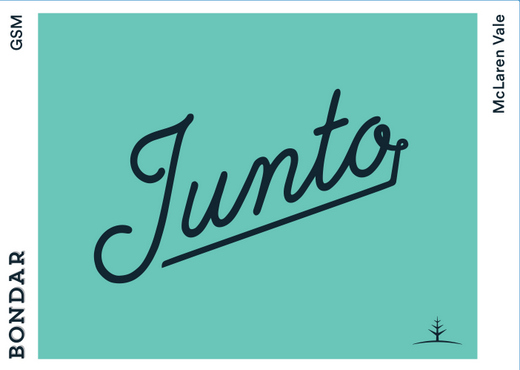 Bondar GSM Junto – Organic
Bondar GSM Junto – Organic
Founded in 2013, Bondar is the vision of husband-and-wife team Andre Bondar and Selina Kelly. Their home is the Rayner Vineyard in McLaren Vale. The estate is comprised of plantings of dry-grown Grenache (up to 50 years old) and dry-grown Shiraz (up to 70 years old), with bush vine Grenache, bush vine Mourvedre, Carignan, Touriga, Counoise, Cinsault, and Sagrantino all more recent additions. Stylistically, Bondar is Andre and Selina’s take on McLaren Vale fruit through the lens of cool climate experiences from the Northern Rhone to the Adelaide Hills
The Junto bottling is 88% Grenache, 6% Shiraz, 3% Mataro, 2% Carignan & 1% Counoise. Junto is Spanish and Portuguese for together. The grapes for Junto are picked early to create a very fresh, bright wine, with red fruits and lovely herbal characters. There’s a life to the palate, a nerve, a tension as well which elevates the intentionally light palate to a more serious place. The blend is put together with the idea that Grenache really is the hero, with Shiraz adding supporting flesh and the Mataro spice and structure/tannin. According to Australian wine critic James Halliday, the Bondar GSM is fast becoming the benchmark of the genre. A great warm-weather red that could even stand a slight chill, this one will be great for grilled sausages or Mediterranean fare.
Grenache from an estate block plus two growers (65-year-old Trott vineyard deep in Blewitt Springs, and McLaren Flat with 80+ year old vines on sand); all estate Shiraz from Rayner Vineyard with 70-year-old vines in sand; Mataro from Willunga on rocky clay soil; Carignan & Counoise are new estate plantings.
Handpicked, the fruit was gently handled in the winery (15% whole bunches) and aged for about eight months in neutral large French oak barrels. Fermented as between 10-25% wholes bunches (with the reminder fermented as whole berries), and raised in old oak, this year’s Junto is quite the delicate wine, exhibiting beautiful aromatics and a pure, lingering flavour. It shows a restraint not often associated with red wines of the McLaren Vale; the growers used very little Shiraz and Mataro this time around so as not to dominate the Grenache fruit, with its superb aromatics and soft juicy mouthfeel.
Pale in the glass yet bright red, it has a very pretty nose with red currant, mint and hints of Chinese five spice. The palate is light and snappy, with flavors of sour cherry and raspberry. The tannins are soft and ever so silky, yet the wine is held together by lovely juicy acidity. Overall a fruitful, delicate wine with a balancing savory quality to be drunk in its youth.
96 points James Halliday “Bright, clear crimson; a perfumed, red-fruited, spiced bouquet lights the way, the palate making off with this opening by adding high-quality tannins. Whether or not a shotgun marriage, it comes together in glistening unison.”

Saint-Galet Châteauneuf-du-pape – Sustainable
Back in the day, and that day was 20 years ago, Châteauneuf-du-Papes were priced in the $30 range, with some premium bottlings going into the $60s. Today, the least expensive CdP we’ve sold in the past ten years goes for $38.99, and many of our offerings are in the $70-100 range – and up.
Budget-minded folks who love the fruit-forward, bold style of CdP have generally moved on – to the neighboring regions of Gigondas, Vacqueyras, Lirac, and Cairanne. Not that those wines aren’t great – they are – but they aren’t Chateauneuf, the first AOC established in France.
Enter Saint-Galet, a private project blended by and bottled for a favorite importer, who explains that “restaurant shutdowns in France, combined with those short-lived “over 14%” wine tariffs, meant a once-in-a-lifetime and narrow window of buying opportunity and BUY we did. Our two men in Europe blended this beauty of a Chateauneuf from the ground up with Eric Bonnet of Domaine La Bastide Saint Dominique fame.”
Eric Bonnet: “My family has been making wine for a number of years now. My great-grandfather started it. He did not bottle the wine he made under his own label but sold it by the barrel to a negociant. My father started to bottle wine in 1980.”
The wine is made and vinified at La Bastide Saint Dominique from a sustainably farmed estate and with purchased fruit, vinified in stainless and aged in concrete and some foudre.
This wine is a classically composed CdP blend of 80% Grenache 15% Mourvèdre and 5% Syrah, producing a sappy, opulent, mouth-filling wine, that’s a perfect complement to BBQ fare, cheeses, or just hanging around the patio with friends.
Saint-Galet is every Chateauneuf lover’s dream: sappy, dark, gutsy fruit, that garrigue-y smell of the hot Mistral blowing through the vineyards, and a nice long finish that goes on and on!
A complex nose of plums, blueberries and prunes is framed by rocky minerality and complementary mandarin zest, black tea, and white pepper. Prunes and blueberries echo on the plush palate backed by black plum skin framed by minerality. Fine-grained tannins on the back palate lead to a finish of river rock minerality that freshens the long finish.
.

